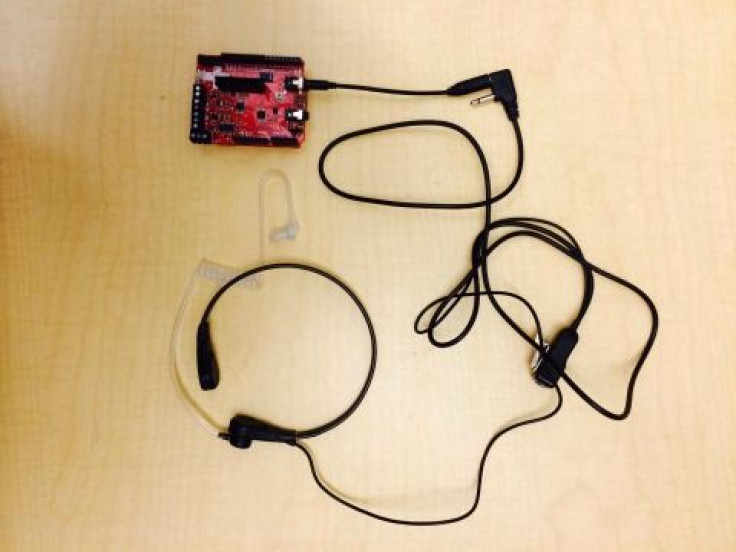A Necklace That Measures Caloric Intake? 'Autodietary' Hears What You Eat

Many weight loss companies treat healthy eating as a numbers game by giving consumers tools that help them count calories. Food journals can help you keep track of your caloric intake, and now, scientists at the University of Buffalo are developing a food-tracking device that will make calorie counting as simple as wearing your favorite necklace.
The device, called “AutoDietary,” is a smart necklace in which a tiny microphone is embedded to listen in on how you eat. It wraps around the back of the neck like a choker necklace, and the mic records the sounds you make while you chew and swallow food, all from its position at the front of your neck. The data is then sent to a smartphone via Bluetooth, where food types are recognized.
The necklace is supported by a library that catalogues the unique sounds that foods make as you bite, grind, and swallow them. Wenyao Xu, an assistant professor at the University of Buffalo, and the archivist of the world’s first "food sound library," believes that unlike the Fitbit, AutoDietary will effectively be able to monitor caloric intake, not just calories burned.
When it comes to weight loss, the Fitbit, is able to track movement throughout the day and calculate how many calories you burned. This is done to make sure you expel the minimum daily target of calories burned that you’ve set for yourself. "There is no shortage of wearable devices that tell us how many calories we burn, but creating a device that reliably measures caloric intake isn't so easy," Xu said in the statement .
Xu and his colleagues also conducted a study on 12 male and female participants to test AutoDietary’s efficacy at recognizing different foods based on the sounds they made while eating. The participants were given water and six types of food: apples, carrots, potato chips, cookies, peanuts and walnuts. The device was able to differentiate between foods 85 percent of the time.
However, when it comes to measuring sound, the necklace has limitations. It cannot yet distinguish between foods like frosted corn flakes and regular corn flakes. It also can't tell the difference between ingredients of complex foods such as soup or chili.
Xu plans to address these limitations by developing a biomonitoring device that would complement AutoDietary. The device is under development, but it would be activated once the necklace recognizes the user is eating a general category of food. The biomonitor would then determine the nutritional value of the food via blood sugar levels and other measurements.
Moreover, the researchers hope AutoDietary will identify the food being eaten and display nutritional information by screen. This would allow users to see how much sugar, fat, and other substances they’ve consumed, and how the body metabolizes them. Automating could help users avoid the manual process of updating their food diaries or health apps, making it more efficient.
This has several clinical implications for diabetes management. Potentially, it could help diabetics monitor their blood sugar levels hour-to-hour. Diabetics would be able to monitor their food intake, and how they manage their condition.
AutoDietary users won’t have to worry about being overwhelmed by a continuous stream of information either. The device is only active while its user consumes food and immediately after.
Source: Bi Y, Lv M, Song C et al. AutoDietary: A Wearable Acoustic Sensor System for Food Intake Recognition in Daily Life. IEEE Sensors Journal. 2016.



























